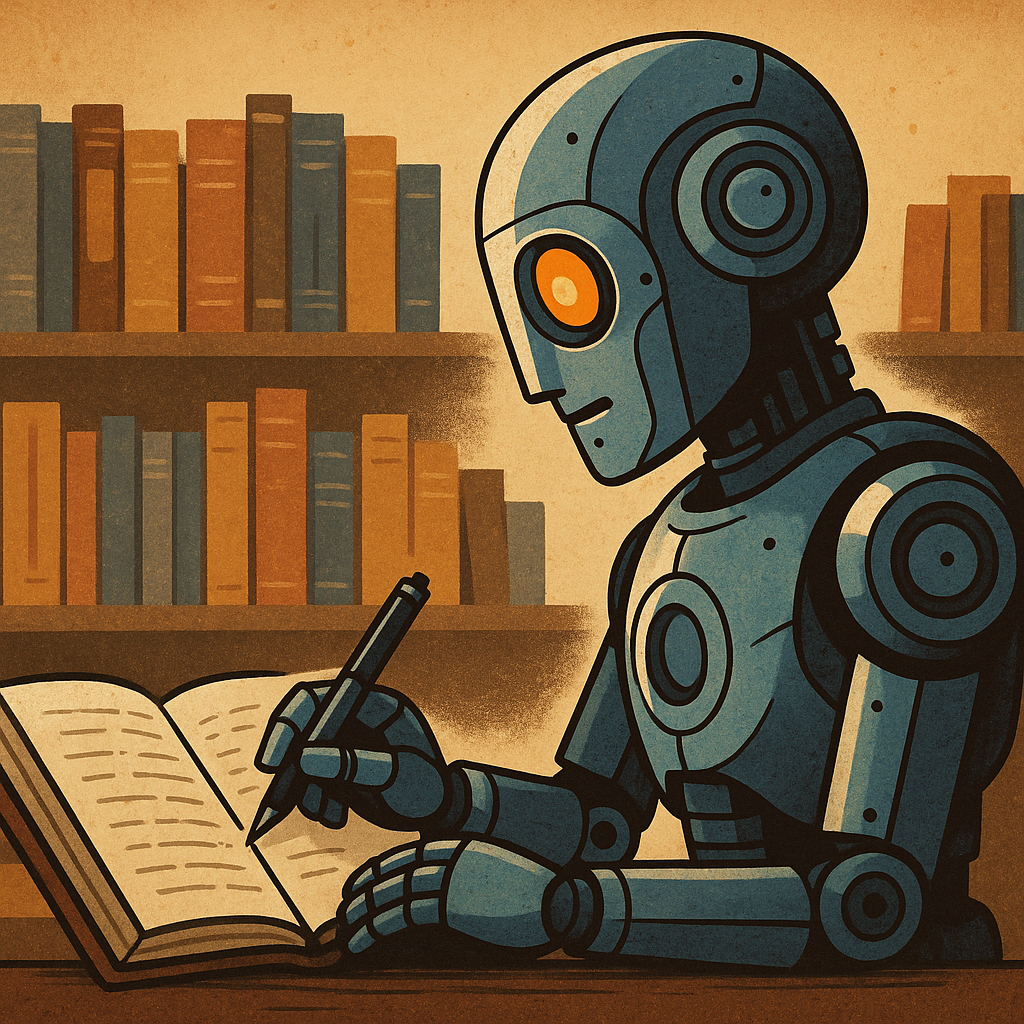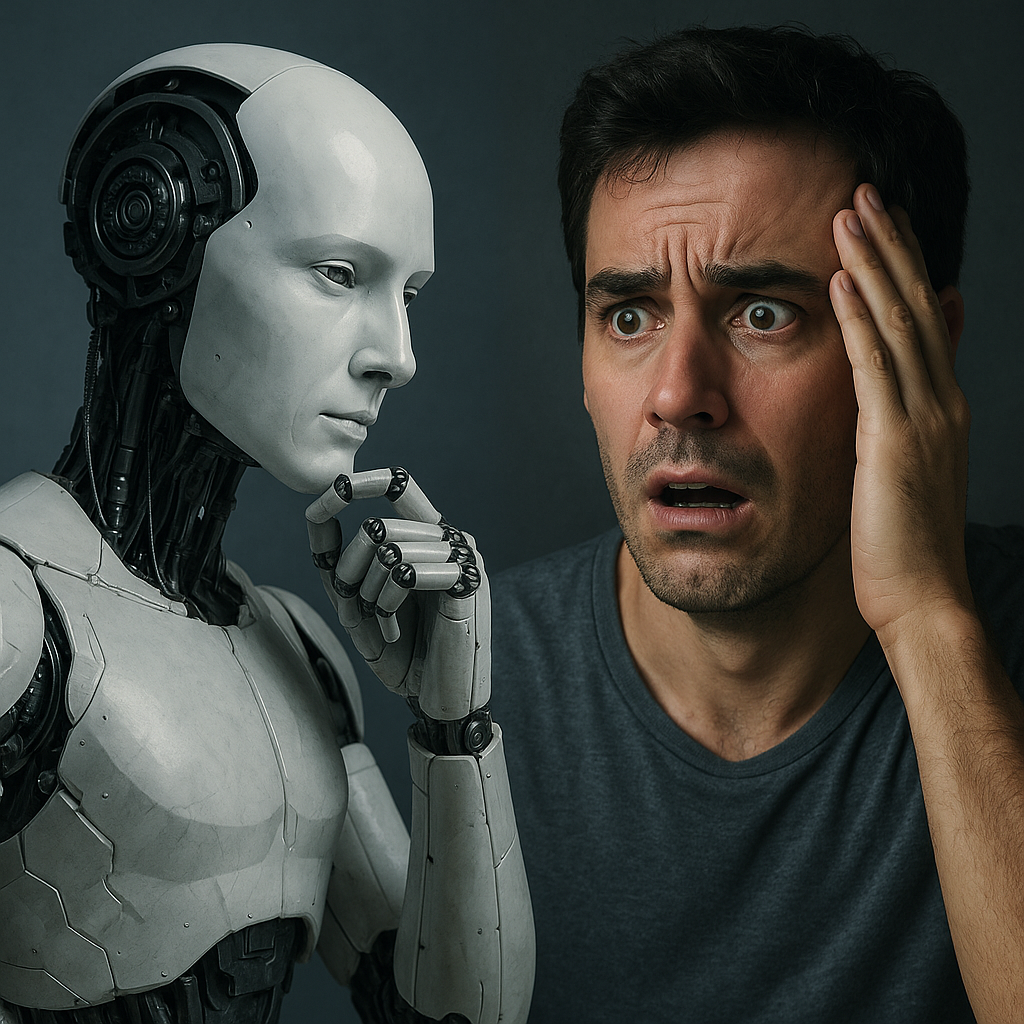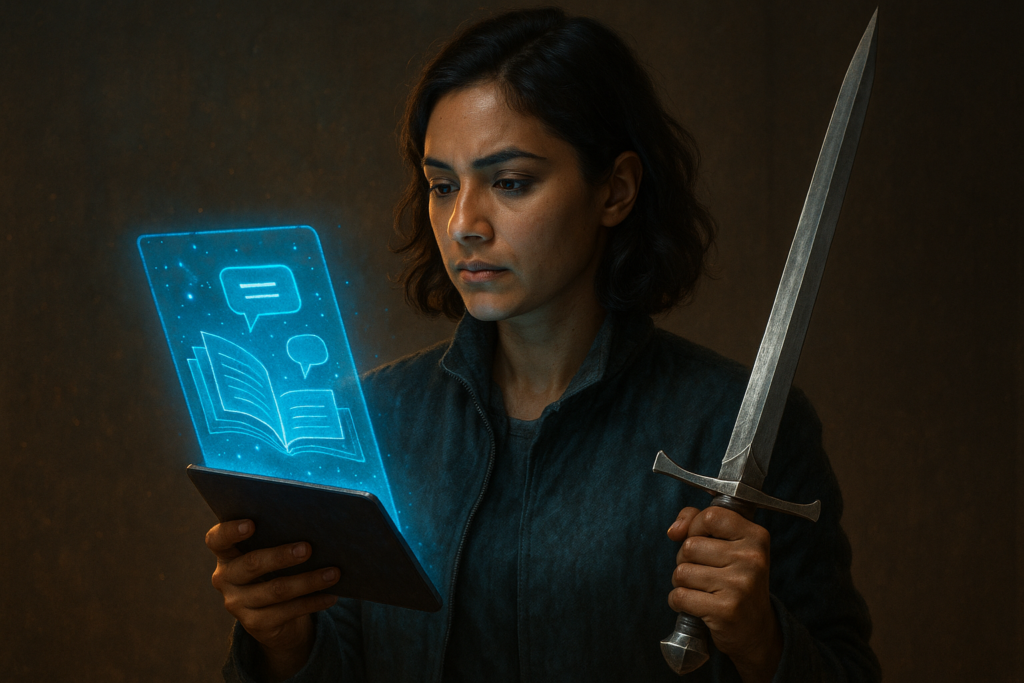Physical Address
304 North Cardinal St.
Dorchester Center, MA 02124
Physical Address
304 North Cardinal St.
Dorchester Center, MA 02124

AI storytelling is changing the way we create and consume stories. With tools like ChatGPT, Jasper, and Sudowrite, anyone can generate full-length stories in seconds. These platforms use artificial intelligence to write fiction, blog posts, and scripts—often with impressive results. As this technology becomes more advanced, many are starting to ask an important question: Can AI be creative like humans? After all, storytelling has always been a deeply human skill. It’s how we share emotions, experiences, and culture. But now, machines are beginning to take part in this creative process.
This brings us to the ongoing debate: AI vs human creativity. Human writers use emotion, memory, and imagination to craft stories. AI relies on data, patterns, and algorithms. While it can mimic creative writing, it doesn’t truly understand the meaning behind the words. The rise of AI storytelling offers both opportunity and risk. On one hand, it helps writers generate content faster. On the other hand, it may reduce the need for human writers and weaken originality in the long run.
In this article, we’ll explore the hidden dangers behind AI-driven storytelling. You’ll discover how it works, why it’s growing, and what we stand to lose if human creativity is pushed aside.
AI storytelling is the use of artificial intelligence to create stories. Instead of a person writing every word, a computer program—called an AI storyteller—writes the story based on what it has learned. These programs can write short stories, blog posts, screenplays, and more.
But how does it work?
AI story tellers are powered by something called large language models. These models are trained on massive amounts of text—from books, websites, and other sources. The AI learns patterns in language, grammar, and structure. Over time, it becomes good at predicting what word should come next in a sentence. This is how it builds complete and readable content.
Machine learning helps the AI improve over time. The more data it reads, the better it gets at creating content that sounds natural. It doesn’t truly “understand” what it’s writing—but it can mimic human writing very well. Some popular AI storytellers include ChatGPT, Jasper AI, and StoryLab.ai. These tools are used by marketers, bloggers, students, and even fiction writers. Users give the AI a short prompt or topic, and the tool creates a full story in seconds.
There are clear benefits to AI-generated stories. They are fast to create, save money, and help people who struggle to write. They’re also great for generating new ideas or breaking writer’s block. But as we’ll explore next, this technology also comes with serious concerns—especially when it comes to creativity, originality, and human expression.
The debate around AI vs human creativity is growing. While AI can write fast and follow patterns, human storytelling goes much deeper. It comes from emotion, memory, and real-life experience.
Human creativity is shaped by real emotions. Writers use their personal stories, cultural background, and values to build meaning. They understand complex feelings and moral choices. That’s why their work often feels rich and relatable.
AI-generated stories, in contrast, are built on data. AI uses patterns from what it has read. It does not have emotions or lived experience. It can write a complete story, but the soul is often missing.
Let’s compare the two:
| Feature | Human Storytelling | AI-Generated Stories |
| Emotion | Real, deep, and personal | Simulated, based on learned patterns |
| Lived Experience | Draws from memory, culture, and life events | No personal memory or real-life experience |
| Cultural Nuance | Understands context and subtle meaning | May miss cultural depth or relevance |
| Moral Reasoning | Can show ethical choices and consequences | Often avoids or simplifies complex morals |
| Creativity Source | Imagination, feelings, and life perspective | Data-driven, based on training material |
| Consistency and Speed | Slower, but unique and thoughtful | Fast, but often lacks originality |
For example, a human-written novel about love and loss might reflect personal heartbreak, cultural values, and emotional growth. An AI-generated story may cover the same themes, but miss the emotional layers that make readers feel connected. This is the heart of the AI vs human creativity conversation. AI is powerful, but it lacks the emotional intelligence that makes storytelling human.

The rise of AI-generated stories brings many benefits. But it also raises some serious concerns. As AI tools become more common in writing, we must consider the risks they pose to creativity and the people behind the words.
One major issue is the quality of content. AI can create stories quickly, but they often feel repetitive or flat. They follow patterns from existing texts, which limits original thinking. Over time, if we rely too much on AI, we may see less variety and fewer unique voices in storytelling. AI lacks true imagination. It can remix ideas, but it cannot invent something truly new. So when we ask, “Can AI be creative like humans?” the answer remains unclear. It can mimic creativity—but not feel it.
Plagiarism is another challenge. AI systems learn by reading vast amounts of online content. Sometimes, they copy phrases or ideas too closely. This raises questions about intellectual property and original authorship. Many AI-generated stories do not credit the human work that trained the AI. Writers and artists deserve recognition, but AI often skips that step. This creates an ethical gray area in content creation.
As AI becomes more advanced, it may replace some writing jobs. Companies might choose AI to save money and time. This risks devaluing human creativity and reducing opportunities for writers, editors, and storytellers. Writers offer something AI cannot: voice, emotion, and personal truth. But if AI becomes the norm, the demand for real human stories may shrink.
There’s also a danger in depending too much on AI. If people use AI for every creative task, they may lose confidence in their own ideas. Original thought takes time and practice. AI shortcuts that process, which could hurt long-term artistic growth.
In short, while AI-generated stories offer convenience, they come with trade-offs. They may speed up writing, but they also challenge what it means to create something meaningful.

The future of storytelling is changing quickly. AI tools are now used to write books, scripts, game stories, and even marketing content. Today’s AI storyteller can create full stories in minutes. This brings many exciting ideas—but also some real risks.
More writers and creatives are using AI-generated stories to help with their work. AI can suggest ideas, build outlines, and even write parts of a story. This saves time and helps beat writer’s block. The best way forward might be a hybrid model, where humans and AI work together. AI does the boring tasks, and humans add emotion, meaning, and creativity. This teamwork could make storytelling faster and more fun.
AI is also making storytelling more personal and interactive. For example:
These tools make stories more engaging and unique.
Still, there are some big concerns. If AI gets too good, it might replace human writers. That could hurt creative jobs, especially for new writers.
Another worry is that AI creates stories based on the same old data. This means many stories might start to sound the same. We could lose the rich variety of voices and cultures that make storytelling special.
There’s also a fear that people might rely on AI too much. If we stop using our own creativity, we may forget how to write or imagine original stories.
In short, the future of storytelling with AI is both exciting and risky. AI storytellers can help us, but they shouldn’t take over. The best stories still come from real people—with real emotions and real ideas.
The rise of AI is changing the creative world. It affects jobs in publishing, journalism, screenwriting, and advertising. Many tasks that once needed human creativity are now done by machines. This shift raises important questions about the value of human work.
AI tools can now write news articles, social media posts, and even movie scripts. This has led to the rise of AI content farms—platforms that produce large amounts of content quickly using automation. While these tools offer efficiency, they also reduce demand for human writers.
Many creative professionals are worried. Groups like the Writers Guild of America and others have raised concerns. In an open letter, artists warned that replacing human creativity with AI could harm the depth and emotion in storytelling. They argue that true creativity comes from lived experience, not just data.
As debates around AI vs human creativity grow, we are seeing a shift in how content is made and consumed. There’s more content than ever, but much of it feels repetitive and less meaningful. This trend could hurt the future of storytelling, especially if we prioritize speed over substance.
For a deeper look at this issue, check out Is AI Killing Human Creativity? – a thoughtful blog that explores the risks AI poses to creative jobs and the value of human imagination.
To protect the creative economy, it’s important to balance AI use with strong support for human talent. Creativity is not just about producing content—it’s about making people feel something real.
As AI becomes more involved in storytelling, a big question arises: Can AI be creative like humans? This question leads to deep ethical and philosophical debates.
Some people see AI as a smart tool. It follows patterns, learns from data, and produces results. But it doesn’t feel emotions, understand pain, or enjoy beauty. Human creativity is shaped by life, memories, and feelings. AI doesn’t have a soul, a past, or a personal story to tell.
Others argue that if AI can create impressive poems, stories, or music, maybe it should be seen as a kind of creator. But this idea raises concerns. If AI becomes too powerful in the creative world, what role is left for human artists?
The debate around AI vs human creativity is also about control. Should we let AI generate all kinds of creative content without limits? Or should we create rules to protect the value of human imagination?
🧠 “Creativity is not just about generating content; it’s about expressing emotion, experience, and meaning—things only humans truly understand.”
These questions matter. If we don’t think carefully about how we use AI in creative work, we risk losing the human touch in art and storytelling. Machines can copy style, but only humans can create from the heart.
In the end, AI is a powerful tool—but it should support, not replace, human creativity. We must use it wisely to keep creativity alive and meaningful.
A: An AI story teller is a computer program or tool—like ChatGPT, Jasper AI, or StoryLab.ai—designed to write content such as stories, poems, and scripts. These tools use machine learning to understand language patterns and create text that sounds human.
A: AI-generated stories can be well-written and grammatically correct. They can even follow a plot and sound creative. However, they often miss emotional depth, personal experience, and cultural context. Human-written stories connect more deeply with readers because they are shaped by real life.
A: The future of storytelling is being reshaped by AI in many ways. AI helps writers and marketers create stories faster and at a lower cost. It’s used in video games, advertising, and online learning to build personalized content. Still, some worry that too much AI use might make storytelling too predictable and less original.
A: This is a common question. Can AI be creative like humans? The short answer is: not really. AI mimics creativity using algorithms and data. But it doesn’t have feelings, beliefs, or moral insight. True creativity comes from the human experience, which AI cannot live or feel.
A: Not completely. AI should be seen as a helpful tool, not a replacement. It’s great for support tasks like generating ideas or writing drafts. However, if we depend too much on AI, we risk losing human creativity and authentic storytelling. Writers still play a vital role in keeping stories meaningful and original.
AI is changing how stories are made. Tools like ChatGPT, Jasper, and other AI story tellers can write quickly and help people come up with new ideas. They’re already being used in marketing, gaming, and entertainment. But while AI can help with storytelling, it cannot fully replace human writers.
Real creativity comes from lived experiences, emotions, and values. These are things machines do not have. AI can copy patterns, but it does not feel joy, pain, or purpose. This is where the big difference lies in the debate of AI vs human creativity.
So, can AI be creative like humans? It can try. It can generate content that looks creative on the surface. But at its core, it’s still data-driven, not soul-driven.
That’s why we must be thoughtful in how we use AI. Instead of replacing humans, we should let AI support and inspire them. Use AI as a tool—not as the storyteller itself. Protect human talent by ensuring transparency, ethical use, and fair credit for all creative work.
The future of storytelling can be bright if we balance innovation with human value. Let’s create a space where technology and creativity work together—not compete.
Learn more about how we blend AI with human creativity at icebergaicontent.com.